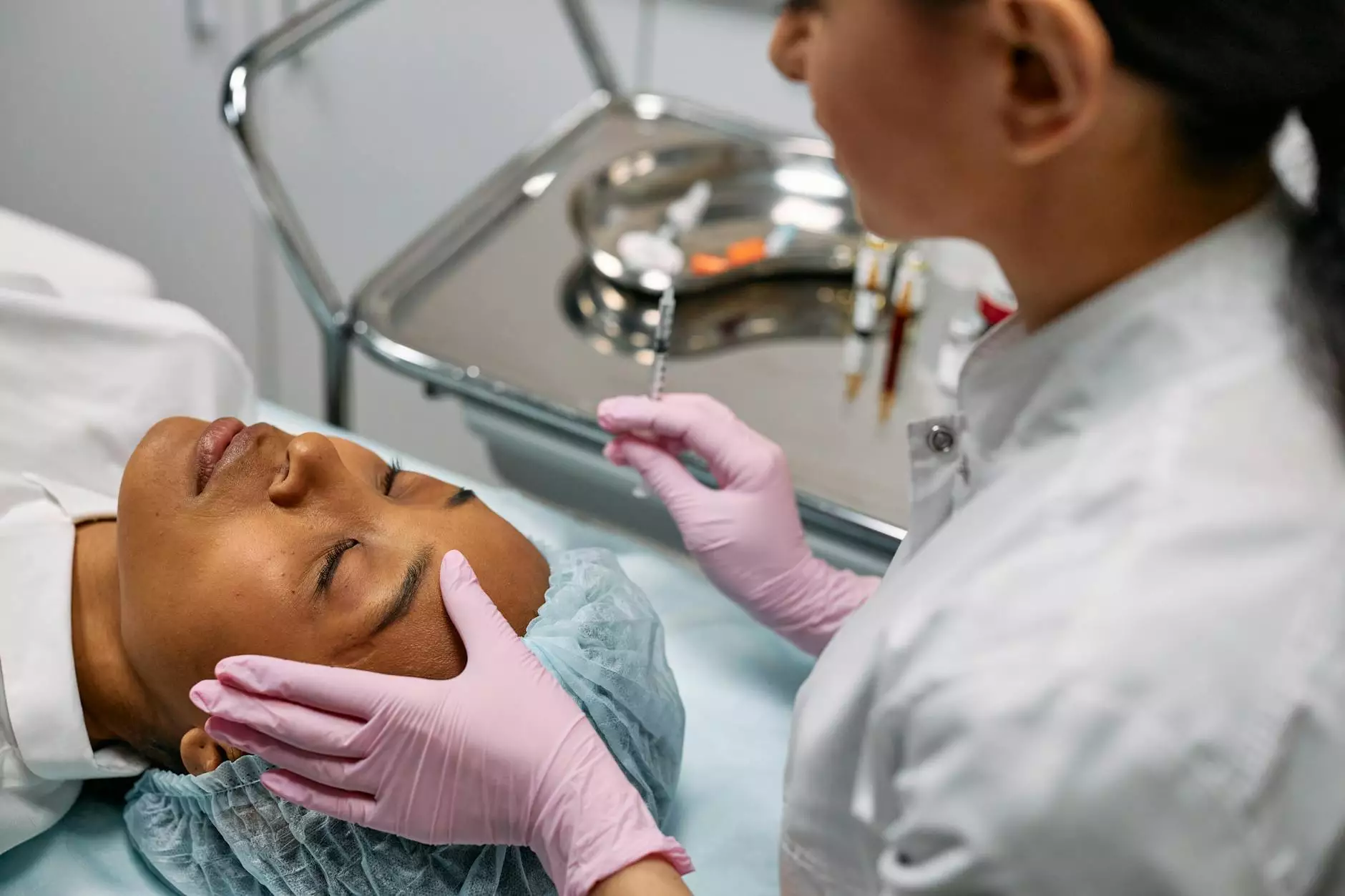Understanding Deep Vein Thrombosis in the Leg

Deep vein thrombosis (DVT) is a serious medical condition that affects millions of individuals worldwide. It occurs when a blood clot forms in a deep vein, commonly in the legs. This article will provide a comprehensive overview of DVT, including its causes, symptoms, risks, diagnosis, and treatment options available to patients.
What is Deep Vein Thrombosis?
Deep vein thrombosis refers to the formation of a blood clot within a deep vein, usually in the legs, but it can occur in other parts of the body. The blood clot can partially or completely block blood flow in the affected vein, which can lead to complications, the most serious of which is pulmonary embolism (PE), where the clot dislodges and travels to the lungs.
Causes of Deep Vein Thrombosis in the Leg
Understanding the causes of DVT is crucial for prevention and management. The following factors can contribute to the development of deep vein thrombosis in the leg:
- Prolonged Immobility: Long periods of sitting or standing can slow blood flow in the legs, increasing the risk of clot formation. This is commonly seen in long-haul travel or extended bed rest.
- Injury to Veins: Trauma or surgery involving veins can lead to clot formation as the body initiates healing mechanisms.
- Certain Medical Conditions: Conditions such as cancer, heart disease, and obesity can increase the risk of DVT. Additionally, inherited clotting disorders make some individuals more susceptible.
- Hormonal Factors: Hormonal changes, especially those related to pregnancy, birth control pills, and hormone replacement therapy, can elevate the risk of clotting.
- Age: Individuals over the age of 60 have a higher risk of developing DVT.
Symptoms of Deep Vein Thrombosis
Recognizing the symptoms of deep vein thrombosis in the leg is essential for early diagnosis and treatment. Common symptoms include:
- Swelling: Swelling in the affected leg, often accompanied by a sensation of heaviness.
- Pain or Tenderness: Pain may occur in the calf or thigh and may feel like cramping or soreness.
- Red or Discolored Skin: The skin over the affected area may become discolored, appearing reddened or bluish.
- Warmth: The area around the clot may feel warm to the touch.
Diagnosis of Deep Vein Thrombosis
If DVT is suspected, a doctor may perform several diagnostic tests to confirm the presence of a blood clot in the leg:
- Ultrasound: This non-invasive test uses sound waves to create images of the blood flow in the veins and identify any clots.
- D-dimer Test: A blood test that measures the presence of a substance released when a blood clot dissolves. A high level may suggest the presence of a clot.
- MRI or CT Scan: In certain cases, imaging tests may be required for more detailed information.
Complications of Deep Vein Thrombosis
Without proper treatment, deep vein thrombosis can lead to serious complications. The most significant risk associated with DVT is:
Pulmonary Embolism
This occurs when a part of the blood clot breaks off and travels to the lungs, blocking the pulmonary arteries. Symptoms of PE can include sudden shortness of breath, chest pain, rapid heartbeat, and coughing up blood, which requires immediate medical attention.
Treatment Options for Deep Vein Thrombosis
Effective treatment for DVT is crucial to reduce the risk of complications. Treatment options include:
Anticoagulants
Also known as blood thinners, anticoagulants help prevent existing clots from growing and new clots from forming. Common medications include:
- Warfarin: A traditional oral anticoagulant that requires regular monitoring.
- Direct Oral Anticoagulants (DOACs): These include Rivaroxaban and Apixaban, which are more convenient as they do not require regular blood tests.
Thrombolytics
In more severe cases, thrombolytic therapy may be used. These drugs dissolve blood clots, allowing for improved blood flow. However, thrombolytics carry a risk of bleeding and are typically reserved for serious cases.
Compression Stockings
Wearing graduated compression stockings can help increase circulation in the legs and decrease swelling, promoting recovery.
Interventions
In rare cases, procedures such as filters to catch clots before they reach the lungs or catheter-directed thrombolysis may be indicated to further manage DVT.
Prevention of Deep Vein Thrombosis
Preventing DVT is paramount, especially for individuals at higher risk. Here are several effective strategies:
- Stay Active: Regular physical activity encourages healthy blood circulation.
- Move During Long Trips: If traveling by plane or car, take breaks to stretch and walk around.
- Maintain a Healthy Weight: Keeping your weight in check can reduce the strain on your veins.
- Avoid Smoking: Smoking can damage blood vessels and increase clotting risk.
- Stay Hydrated: Drink plenty of fluids to improve circulation, especially during travel.
When to Seek Medical Attention
If you experience symptoms of DVT, such as swelling, pain, or discoloration in one leg, it is essential to seek medical advice promptly. Early detection and treatment are critical in preventing complications.
Conclusion
Deep vein thrombosis in the leg is a potentially life-threatening condition that requires proactive management and prevention. By understanding the causes, recognizing symptoms, and knowing the treatment options, individuals can significantly lower their risk of developing DVT. If you or someone you know is at risk, consult with a healthcare provider for personalized advice and management strategies.
For more information on vascular health and management of deep vein thrombosis, visit trufflesveinspecialists.com.
deep vein thrombosis leg








